

Damion Smy
Boxy new KGM Musso unveiled to take on HiLux and Ranger ahead of Australian launch
6 Hours Ago
The Kia Cerato has been given a mid-life glow-up. It's still a good, simple hatchback, but it's much more expensive than it once was.
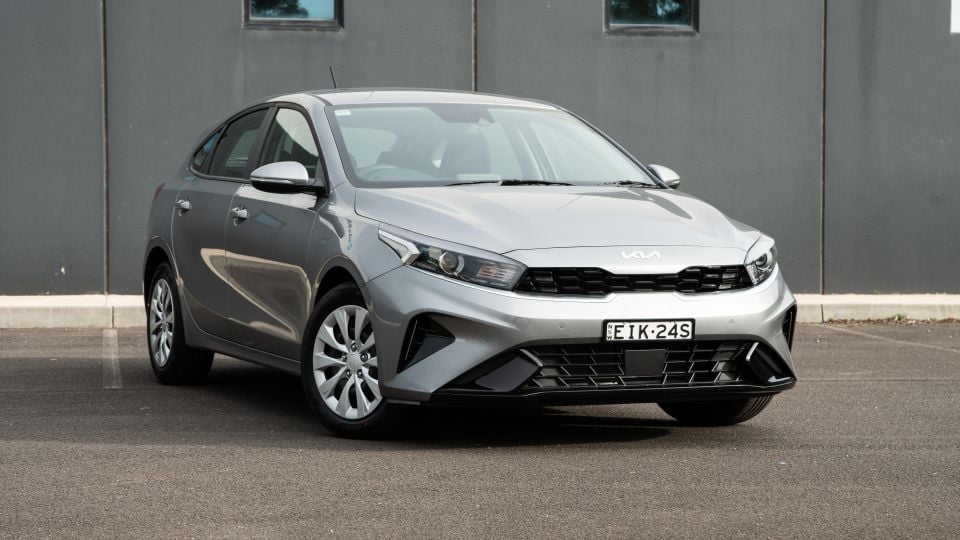
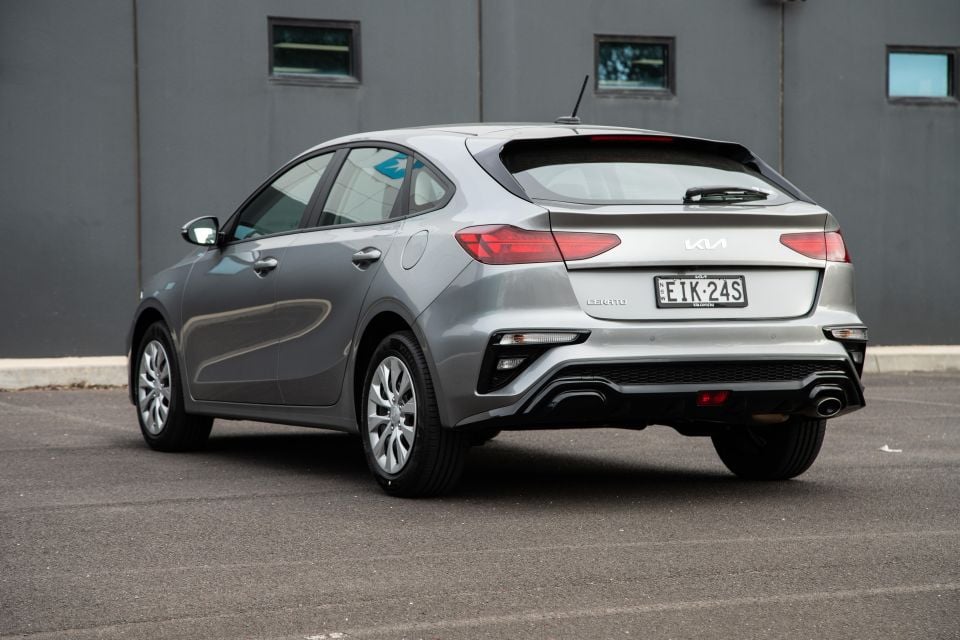

Contributor
New from
$24,290
excl. on-roads

Contributor
New from
$24,290
excl. on-roads


Contributor
New from
$24,290
excl. on-roads

Contributor
New from
$24,290
excl. on-roads
Quickly see how this car stacks up against its competition. Select any benchmark to see more details.
Where expert car reviews meet expert car buying – CarExpert gives you trusted advice, personalised service and real savings on your next new car.
Kia’s cheap and cheerful Cerato isn’t all that cheap anymore.
Having launched at just $21,490 drive-away with an automatic in 2018, the base Kia Cerato’s price has crept north of $25,000 drive-away in 2021.
Sure, it has a new look and slightly more interior technology now than before, but there’s no getting away from the fact that’s a pretty serious price hike.
What does the 2021 model have to show for its inflated sticker price?
There’s a flashy new Kia logo, a new infotainment system with wireless Apple CarPlay, and a mildly sharpened design… but the same engine, and the same basic interior design.
What gives?

Pricing for the Cerato kicks off at $25,990 drive-away for the Cerato S, but the Cerato S with Safety Pack on test here is $27,490 drive-away.
All prices are drive-away
At $27,490 drive-away, the Cerato S with Safety Pack goes head-to-head with the Hyundai i30 ($25,420 before on-roads) and Mazda 3 G20 Pure ($26,590 before on-roads).
It also undercuts the cheapest Volkswagen Golf ($31,590 before on-roads with auto) and Skoda Scala ($28,990 drive-away with auto).
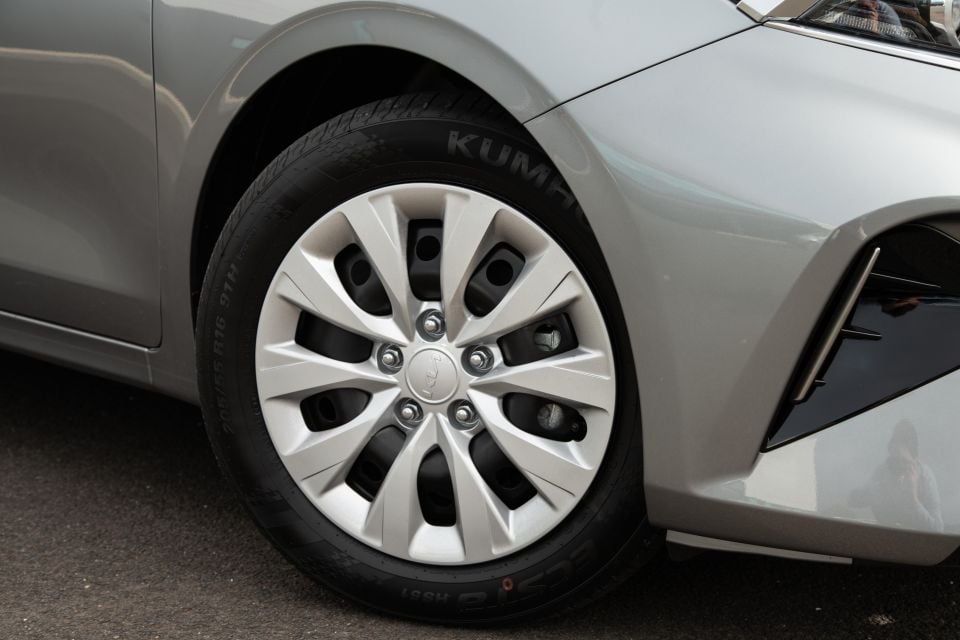
Buy your new car without the stress. It's fast, simple and completely free.

Great service from Travis and team, second time I have used this business would not hesitate to recommend them to anyone
Craig C.
Purchased a Ford Ranger in Sunshine Coast, QLD
CarExpert helped Craig save thousands on his Ford Ranger, now let us save you on your next new car.
Find a dealStandard equipment in the Cerato S includes an 8.0-inch touchscreen infotainment system with wireless Apple CarPlay and Android Auto, AM/FM radio, and Bluetooth phone connectivity.
There’s air conditioning, cruise control, a six-speaker stereo, a reversing camera, parking sensors at both ends, and 16-inch steel wheels.
Opting for the Safety Pack ($1500) fitted to our tester upgrades the rear disc brakes from 262mm to 284mm units, and adds adaptive cruise control, an electronic parking brake, power-folding exterior mirrors, adds cyclist detection to the AEB system (car/pedestrian standard), blind-spot monitoring, rear cross-traffic alert, and a leather-wrapped steering wheel/shifter.
Suffice to say it’s a box worth ticking.
Moving up to the mid-range Sport adds a 10.25-inch touchscreen infotainment system with factory navigation, wired smartphone mirroring, DAB digital radio, along with illuminated vanity mirrors.
The Sport+ gets all the kit from the Safety Pack, along with blind-spot assist, leather seats, keyless entry and start, heated front seats, and automatic dual-zone climate control.
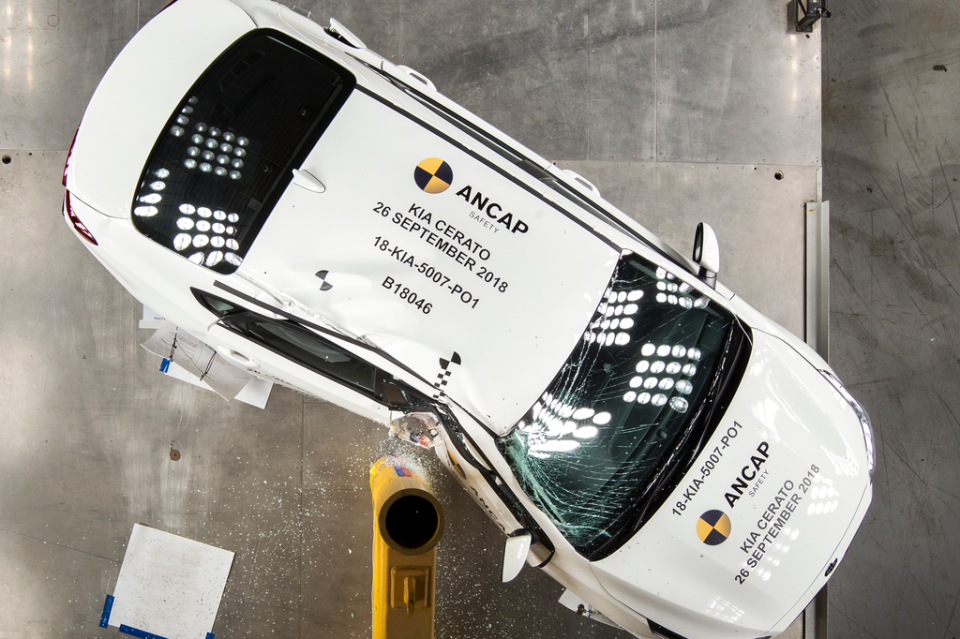
When the Kia Cerato was tested by ANCAP in 2019, it received a split rating.
Kia Cerato S and Sport models without the Safety Pack received a rating of four stars, while all other Cerato models received a rating of five stars from ANCAP.
All models received an adult occupant protection score of 90 per cent, child occupant protection score of 83 per cent, vulnerable road user protection score of 55 per cent and a safety assist score of 71 per cent.
All 2021 Kia Cerato models come standard with the following safety equipment:
When equipped with the Safety Pack, or in Sport+ and GT trim, the list of safety equipment is expanded to include:
The Sport+ and GT also feature blind-spot assist.

Not much has changed since the Cerato launched, which is mostly a good thing.
Although there’s a lot of hard, black plastic scattered around, the design is still handsome, and the layout of all the controls is logical.
New for 2021 is an infotainment system with wireless Apple CarPlay and Android Auto that, unlike earlier iterations, isn’t prone to dropping out. It worked without a hitch during our time behind the wheel, and means you rarely need to interact with the manufacturer’s interface.
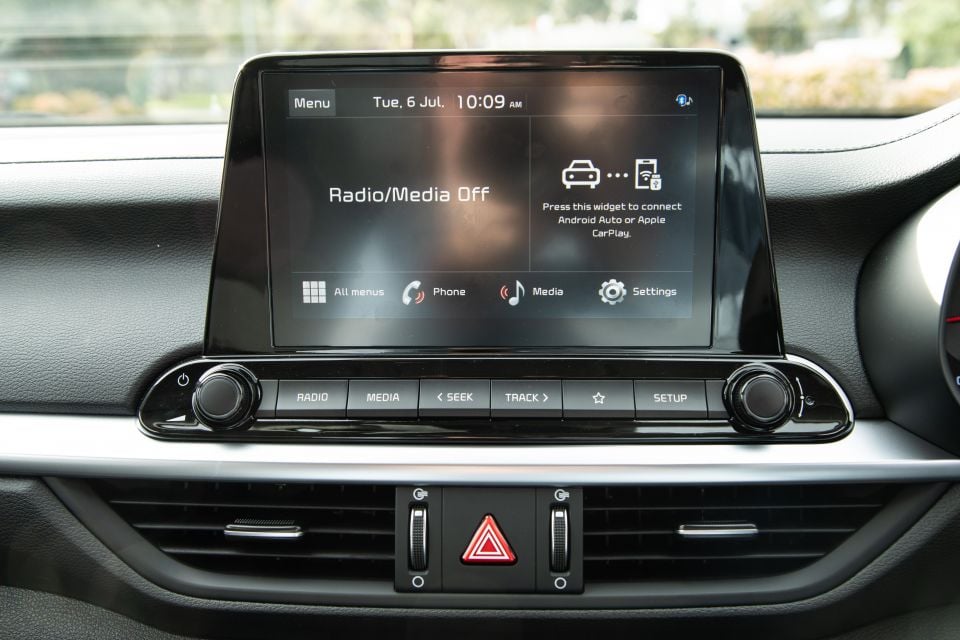
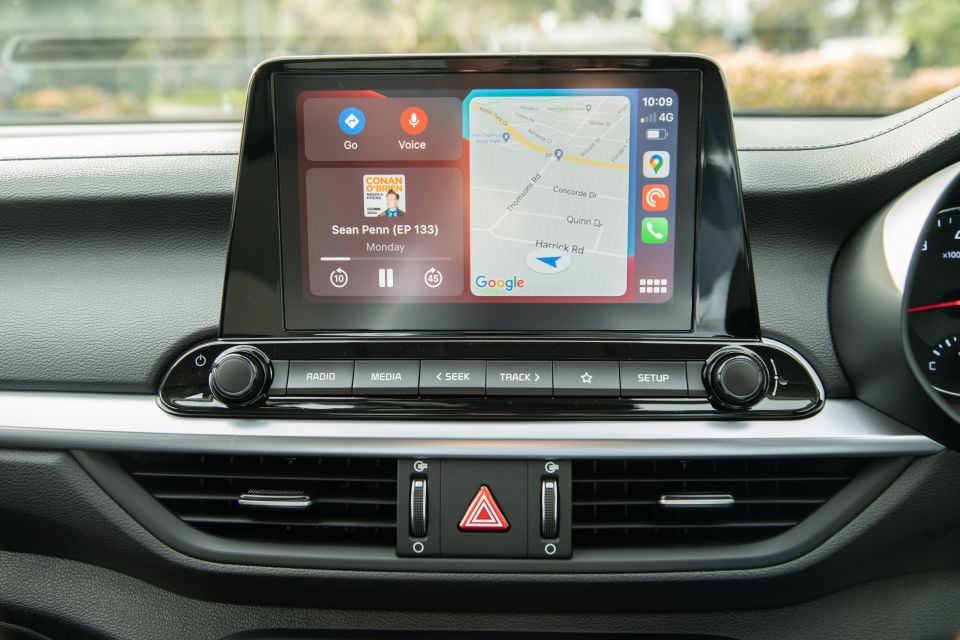
When you do need to dive into the Kia system it’s simple and easy to use, with a logical structure and quick responses. Those who want satellite navigation will need to step up to the Sport, though.
The driver and passenger sit in low-set, cloth-trimmed seats that are equal parts hard-wearing and comfortable. The manually-adjusted driving position has more than enough range for tall drivers, and offers good long-haul comfort for what’s a relatively compact car.
Unlike the related Hyundai i30, the Cerato doesn’t feature partially-digital gauges after its mid-life update – but that’s no bad thing, because the trip computer has a digital speedo, and the analogue dials are clearer than a half-hearted attempt at virtual ones anyway.
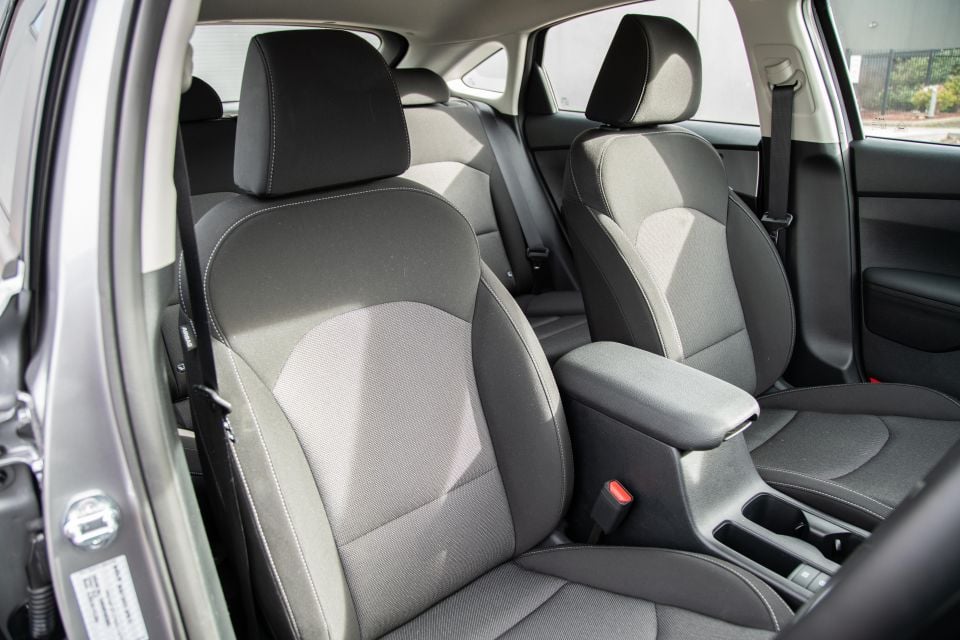
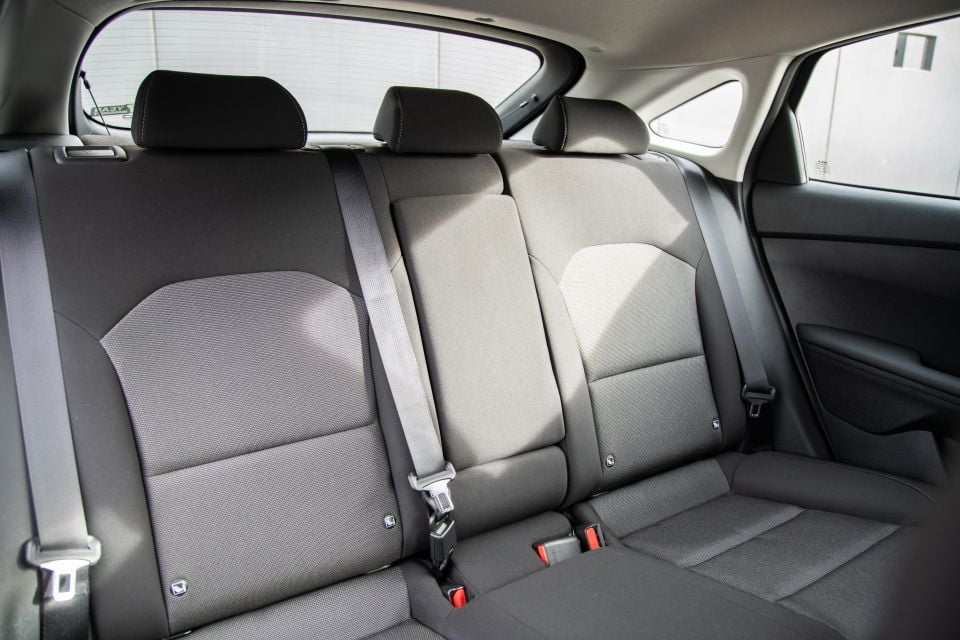
Most of the places you poke and prod are nicely trimmed, led by the leather-wrapped steering wheel and gear shifter, but there are plenty of firm and scratchy surfaces to remind you this is the cheapest Cerato money can buy.
Storage is plentiful up front. There’s a dual-tier space perfect for an oversized smartphone beneath the dashboard, two cupholders on the transmission tunnel, a decent underarm bin, and door bins that’ll swallow large bottles without stress.
There are two USB-A ports in the front, backed by one beneath the air vents in the back.

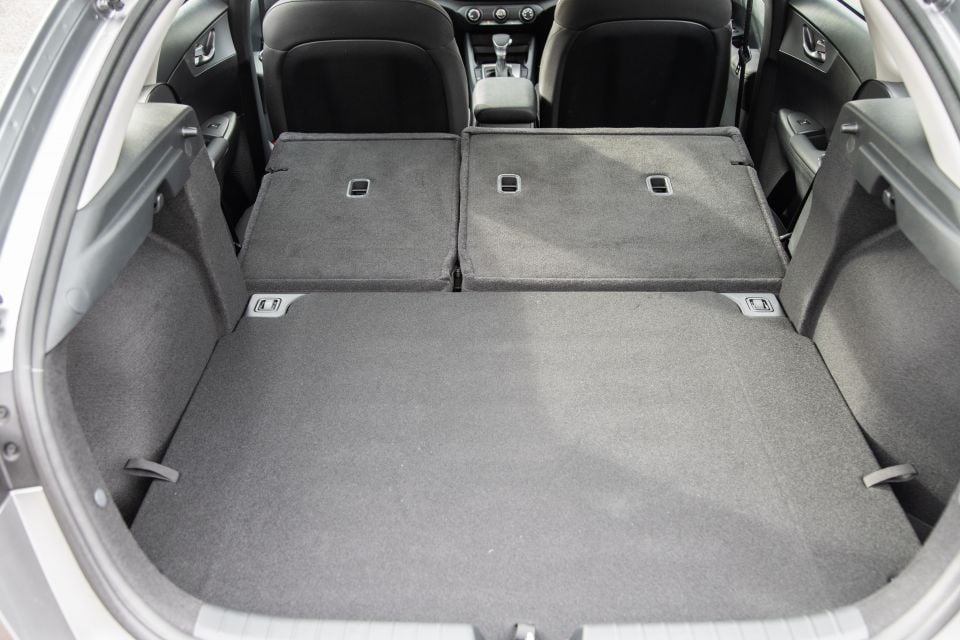
Speaking of the back, the Cerato is one of the more spacious hatchbacks down back. Legroom is good behind regular-sized adults, while headroom is better than the sloping roofline might suggest.
(Very) tall passengers might have their hair brushing the headlining, but that’s nitpicking really. ISOFIX points feature on the outside rear seats, and all three have top tether attachments.
Boot space is 428L with the rear seats in place, and there’s a space-saver spare under the floor.
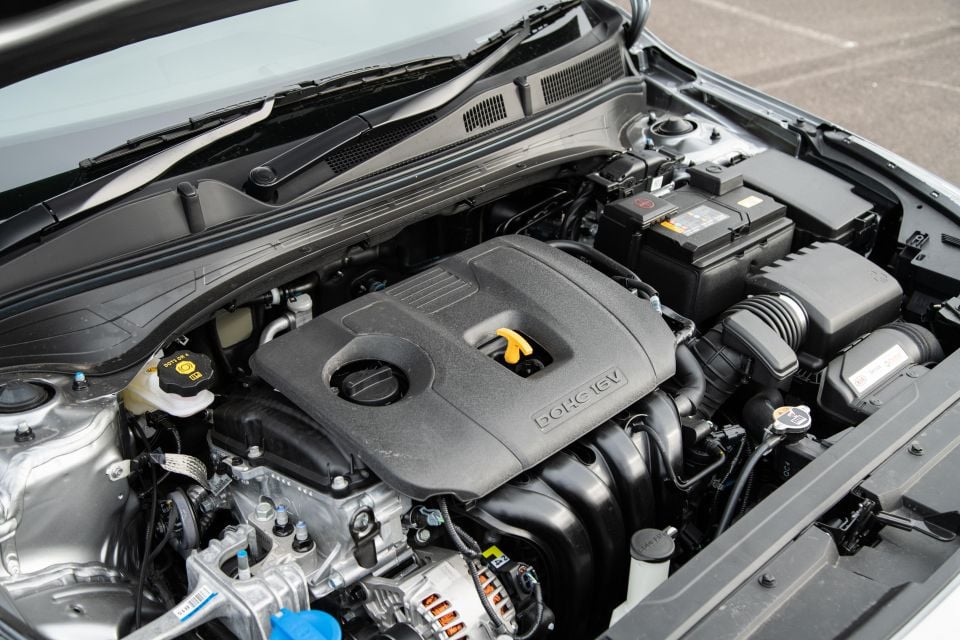
As was previously the case, the base Cerato is powered by a naturally-aspirated, 2.0-litre four-cylinder petrol engine with 112kW of power and 192Nm of torque.
It’s mated with a six-speed torque converter as standard, and is front-wheel drive.
Claimed fuel economy is 7.4L/100km on the combined cycle, we saw around the 9.0L/100km mark in a week heavily skewed to city driving.
The Cerato drinks 91 RON regular unleaded, not pricier premium unleaded like some turbocharged rivals.
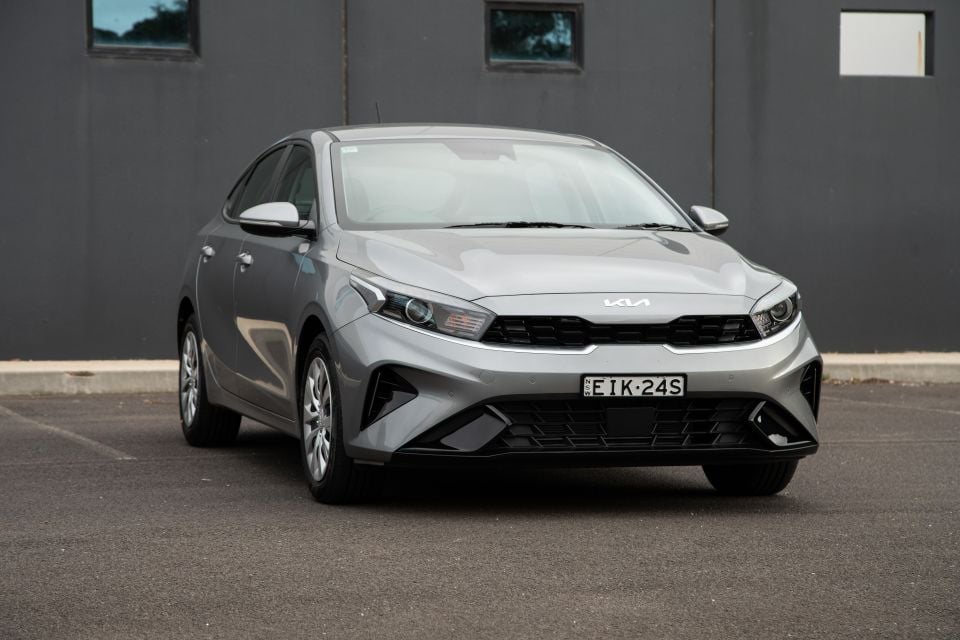
The non-GT Cerato has always felt solid but slightly uninspiring, and that hasn’t changed with the update.
On the basic 16-inch alloy wheels it rides well, floating over the lumps and bumps of urban Melbourne better than it ever could on big wheels paired with liquorice-thin rubber.
Sure, they make the car look like a rental special, but the base steel wheels make the Cerato a better car.
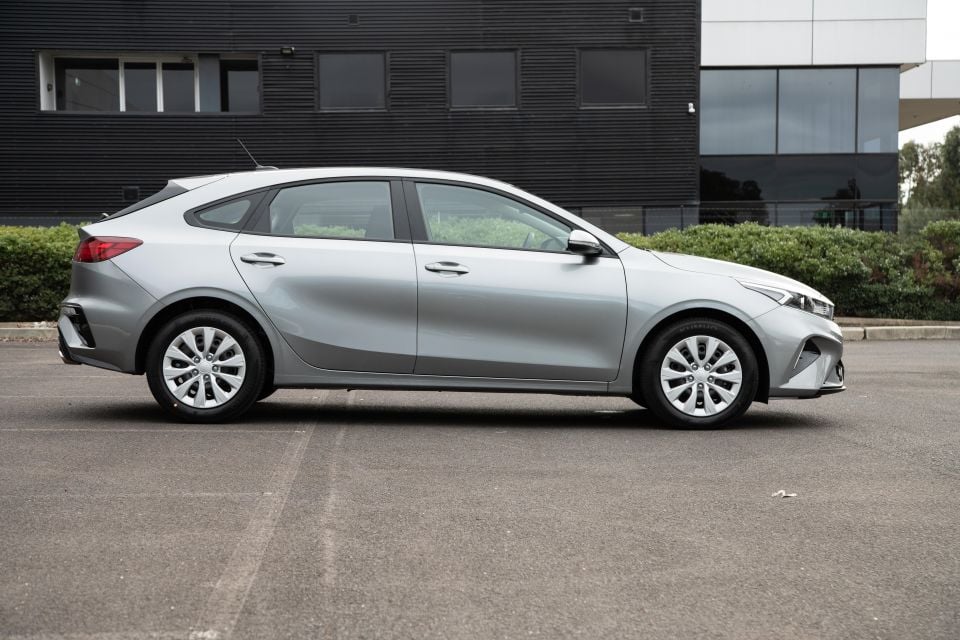
The engine isn’t a firecracker on paper, and it doesn’t present as one in the real world – but it’s a perfectly serviceable mill in daily use, and has no learning curve.
With a torque converter automatic and no turbocharger, the driver can just point and shoot like they’ve always done. The Cerato is smooth and relatively refined off the mark, the six-speed auto snapping through the gears more quickly than was previously the case.
In a hurry? The naturally-aspirated engine needs to be leant on a bit harder. It gets a bit noisy and gruff as the tachometer needle swings past 3000rpm, but the Cerato isn’t what you could call unrefined.
Those in search of more punch should be looking at the 1.6-litre turbocharged GT (though it’s $10,000 pricier), but the basic engine will do the job fine for most people.

With decent weight to the steering and a suspension tune that is comfortable but tied down, the Cerato actually handles better than you might expect of an entry-level hatchback.
It can be slung into corners with confidence, and it’s happier to change direction than it has any right to be if you tackle local roundabouts with enthusiasm.
It’s also solid at highway speeds. The ride is excellent on the open road, and the Cerato feels more planted than you might expect of a small hatchback. There’s a bit of wind and road noise, but it’s far from unbearable – you could happily while away the hours.
Overtaking does take some planning, though. You need to really work the engine, at which point it all gets a bit thrashy.
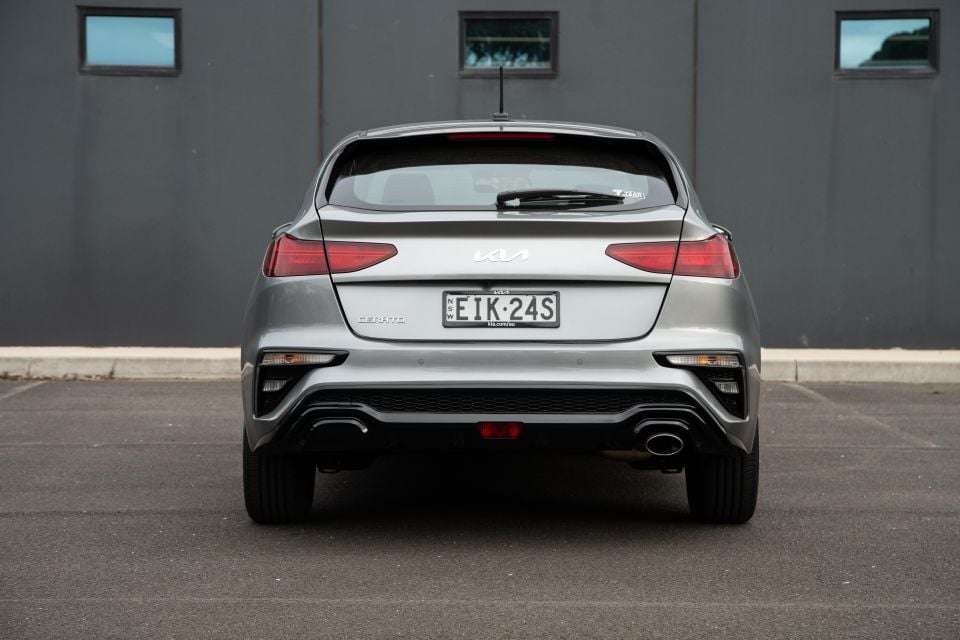
Kia’s adaptive cruise control and lane-keep assist both work well, although the lane centring is far too grabby. Thankfully it can be turned off independently of the lane-keeping.
It’s also worth noting, you need to pay $1500 to actually get adaptive cruise, lane-keeping, and blind-spot monitoring.
There’s more weight to the steering than in some rivals at low speed, but the Cerato is still easy to thread through tight carparks.
The sloping roofline does impede slightly on over-the-shoulder visibility, but the reversing camera and parking sensors mean you shouldn’t struggle to squeeze into tight spots.
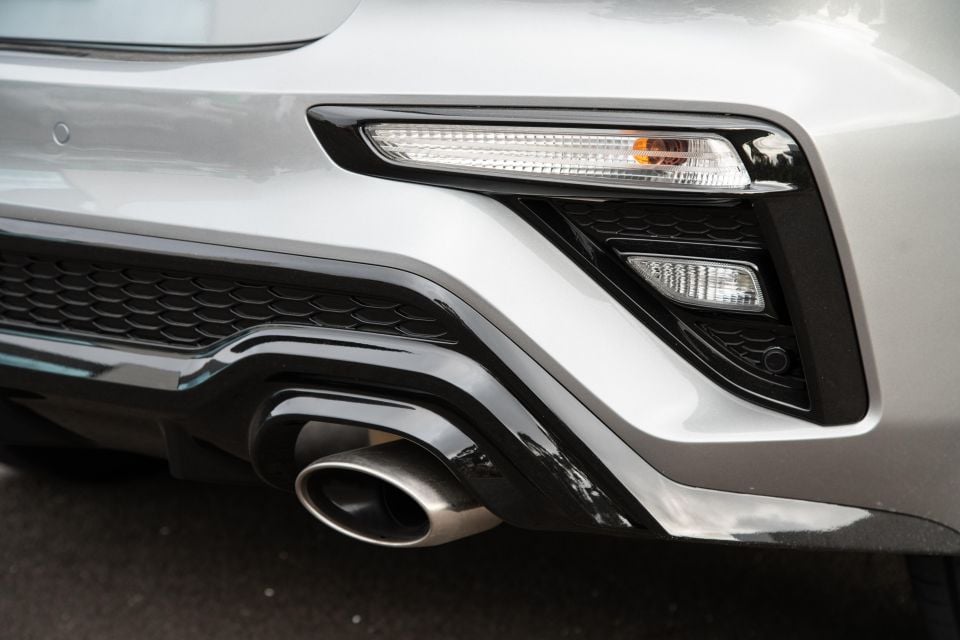
Where expert car reviews meet expert car buying – CarExpert gives you trusted advice, personalised service and real savings on your next new car.
The Cerato is covered by a seven-year, unlimited-kilometre warranty.
Maintenance in the Cerato is required every 12 months or 15,000km, whichever comes first.
Kia offers seven years of capped-price servicing, with an average annual cost of $419.
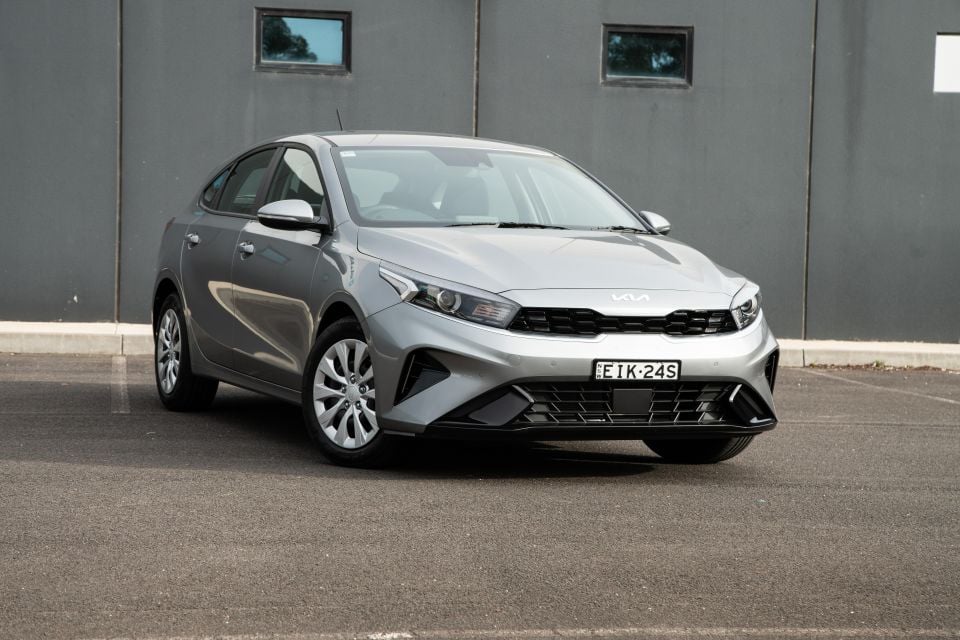
There’s no doubt the Cerato is a solid hatchback, but it’s disappointing that Kia still makes the bulk of active safety features optional.
Not only that, it’s made the Safety Pack a more expensive option on a more expensive base car compared to when the Cerato launched.
Did Kia make a rod for its own back by pricing the Cerato so sharply at launch? Maybe, given it’s now closely aligned with the Hyundai i30.
If you can look past the price jump, the Cerato is a practical, comfortable, and reasonably fun-to-drive hatchback backed by an industry-leading warranty.
Just make sure you tick the Safety Pack box.
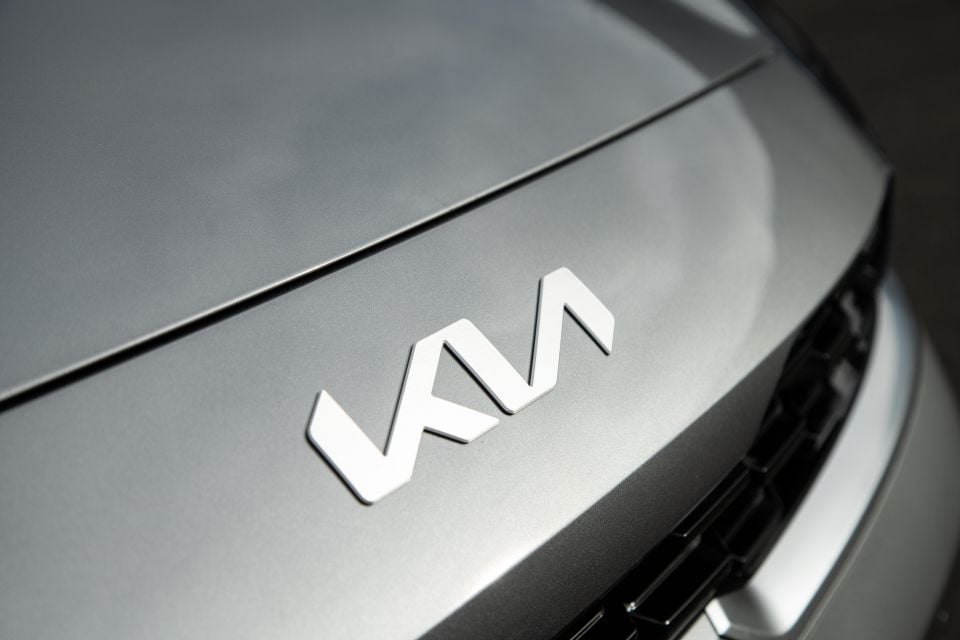
Click the images for the full gallery
MORE: Everything Kia Cerato
Where expert car reviews meet expert car buying – CarExpert gives you trusted advice, personalised service and real savings on your next new car.
Scott Collie is an automotive journalist based in Melbourne, Australia. Scott studied journalism at RMIT University and, after a lifelong obsession with everything automotive, started covering the car industry shortly afterwards. He has a passion for travel, and is an avid Melbourne Demons supporter.


Damion Smy
6 Hours Ago


Damion Smy
7 Hours Ago


Damion Smy
9 Hours Ago


Damion Smy
10 Hours Ago


Damion Smy
12 Hours Ago


Damion Smy
13 Hours Ago